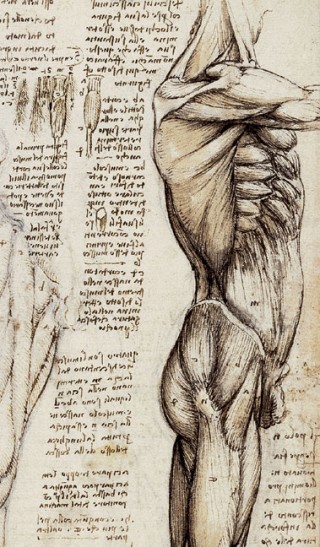An article published in Smart Money on January 24, 10 Things the Emergency Room Won’t Tell You, discussed some of the downsides to emergency room care. I will tackle these claims one by one.
1. Patience will get you nowhere.
The emergency room is a busy place, and it is generally true that being clear about your symptoms is important. However, patients are generally triaged by experienced nurses and physicians who are particularly attuned to the dangers mentioned in the article – shoulder pain, for example, should not simply be disregarded because it is not chest pain. The initial workup, including an ekg to analyze the rhythm of the heart, will be performed immediately for patients who are in high-risk groups based on age, gender, and other predictive factors. This ekg will be interpreted by an experienced physician. The moral of the story? Be clear about your symptoms and alert the triage staff if there are any changes in your symptoms.
Patience will get you somewhere – it will get you, even if it takes time, to the emergency room. Although waiting can be frustrating, if your condition was serious enough to bring you to the ER in the first place, then it is probably serious enough to warrant waiting for a complete examination by a physician. Although some conditions will not cause death or serious consequences in the first few hours, many of these conditions can progress to cause serious problems in the next 24 to 48 hours. Thus, the wait may very well be worth it. It is your health, after all, and it is better to err on the side of caution.
2. There’s a cheaper option down the street.
Urgent care centers, if they are open and are conveniently located, are certainly an alternative worth considering. They are especially good for straightforward medical problems, such as lacerations or sprains. It is true that the ER does not offer extensive information on cheaper options, other locations, or alternatives to ER care – we are there to take every sick patient who walks through our doors and to treat them as best we can. That is our primary focus. And we certainly do not want any patient to feel that we are turning them away just because their condition can be treated elsewhere. Furthermore, many ERs now have urgent care centers as part of the facility, where patients can be seen and treated by physician assistants.
3. Bring a book.
Excellent idea. I could not agree more. Waiting – to be seen, to be treated, to receive test results, or to be admitted to the hospital – are all part of the normal course of things in the hospital. Bring a book, a magazine, music, or anything else that will keep you occupied during this time.
4. Come back in the morning.
Be careful on this one. We have many patients who decide to wait until morning to come to the emergency room – and by this time they may have already been trying to “ride out” a heart attack, aortic aneurysm, or other life-threatening condition for several hours. Although the wait may be shorter in the morning hours, if there is a possibility that you have a life-threatening medical condition, you will be seen quickly at almost any hour of the day – this is the main purpose of the ER. And ultimately, experienced nurses and physicians are better equipped than you to decide how serious your condition might be – patients often underestimate the gravity of their symptoms.
5. We might make you sicker.
This is not any more true of the ER than it is of the hospital. In fact, the case used as an example in the article was of a patient who was admitted to the hospital and underwent surgery – her complications are likely not associated with her ER visit. However, it is true that hospitals are places where infections can spread. As a result, hospitals have been proactive about placing Purell dispensers outside almost every patient room in the hospital. They have also been proactive about instituting hand-washing measures with rewards and punitive measures for physicians, nurses, or other hospital staff based on overall performance. In the ER, we are especially attuned to the potential spread of infections. During the 2010 H1N1 outbreak, many ERs were so cautious that they required patients, visitors, and physicians to wear masks if there were signs or symptoms of flu (fever, chills, cough, and the list goes on).
6. To us, you’re like a lab rat…
I don’t think ER physicians would bother to do such extensive medical workup on a lab rat. And most of these tests are not invasive. The “workup” for chest pain involves blood tests, an ekg, a chest x-ray, and possibly the scheduling of an outpatient stress test if everything checks out – not an unreasonable test, I would argue, for any middle-aged person who has chest pain. Many people have chest pain, but chest pain that is serious enough to bring you to our doorstep – the ER – is taken just as seriously by us as by you. As for unnecessary testing, refer to Defensive Medicine Supersedes Quality Medicine. This is one of the problems at the heart of medicine in this country, and it is a problem that we must fight to overcome.
7. …but don’t expect us to figure out what’s wrong.
This is generally true. In the emergency room, we determine if your condition is life-threatening or if it needs urgent intervention. We decide if you need to stay in the hospital or not. We elicit certain important characteristics about what is wrong, but we cannot necessarily give you a diagnosis in the brief time period that we care for you. In the end, however – and this goes back to the title of my blog – much remains a mystery in the world of medicine and human health. Many conditions will take months or years to diagnose, and other conditions will never be given a formal diagnosis. Many conditions necessitate extensive testing or knowledge of symptoms over long periods of time – information which, for purposes of time and money, the ER is simply not equipped to obtain. But even after all the testing has been done in the outpatient setting, physicians cannot always come up with a diagnosis. This is one of the great frustrations of medicine.
8. Good luck seeing a specialist.
This is completely dependent on where you go. Furthermore, many conditions necessitate being seen by a specialist in the next few days (especially orthopedic injuries, hand injuries, and urologic issues, which are all mentioned in the article), and in these cases you will be referred to the appropriate specialist in a specific time range. Ultimately, these referrals may delay but should not compromise the quality of your care.
9. Your doctor can get you priority access.
If you have time, alerting your physician that you are going to the ER is a good thing. However, there has been a trend since the 1960s that private physician like to rely on ER physicians more and more, and many private physicians no longer come to the ER themselves. If they are willing to, they serve as an invaluable resource – after all, they know you far better than the emergency physician who will be treating you.
10. You can choose your doctor.
There are two different points made here – one is that you can choose to see your own specialist in the ER. This is generally true if he or she is affiliated with the hospital in some way – otherwise, as in the previous point, it is difficult to get a specialist to see you in the ER if he or she does not have an established relationship with you. In fact, ER physicians often view these people as a valuable resource – even if they do not come in to see you, we make a point of calling them to obtain important medical information.
The second point is about ER certification. The article cites statistics by the Institute of Medicine that 40% of ER physicians are not board certified in emergency medicine. It is almost ironic – and a good thing – that being board-certified in EM is now the gold standard. As recently as the 1990s, it was commonplace that physicians trained in medicine and surgery ran the ER without any emergency medicine training. With the rise of ER residency programs, which began in the 1980s, we are finally catching up with the nation’s demands for board-certified ER physicians. EM residency programs continue to expand, and the requirements for full-time ER positions are becoming increasingly stringent. This is a positive trend, and I hope it continues well into the 21st century.
Emergency medicine is an invaluable part of medical care in this country, and it is important that we fill our emergency rooms with physicians who have the diagnostic skills and the proper training to recognize sick patients, to stabilize sick patients, to save lives, and to devise for all patients who walk through our doors the appropriate disposition plans that will optimize their care. Thus, in spite of some of the flaws of the ER and of the hospital in general, it comes down to risks and benefits. Do not let some of the downsides of the ER turn you away – the consequences of avoiding the health system, however unpleasant it may be, can be devastating.






